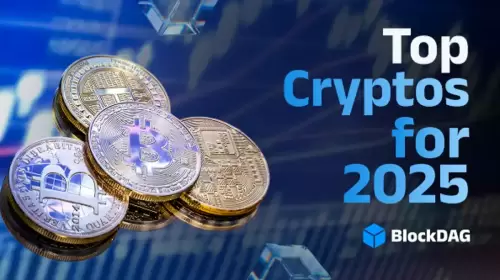 |
|
 |
|
 |
|
 |
|
 |
|
 |
|
 |
|
 |
|
 |
|
 |
|
 |
|
 |
|
 |
|
 |
|
 |
|
Cryptocurrency News Articles
Crypto, GDP, and Canada: Navigating the Digital Frontier
Jul 20, 2025 at 12:20 pm
Explore the intersection of crypto, GDP, and Canada. From Solana investments to market trends, we'll dissect the latest developments.

Crypto, GDP, and Canada: Navigating the Digital Frontier
The world of crypto never sleeps, and its tendrils are reaching into every corner of the global economy. Let's dive into the intersection of crypto, GDP, and Canada, focusing on key developments and trends shaping this landscape.
Crypto Market Surges Past GDP Giants
The crypto market recently smashed through a historic milestone, exceeding $4 trillion in total market capitalization. That's bigger than the annual GDPs of major economies like the United Kingdom, France, Italy, Canada, Brazil, and Russia! Bitcoin led the charge, hitting an all-time high, but altcoins like Ether, Uniswap, and Solana are also showing strong momentum.
This surge isn’t just about speculative price action. Regulatory developments, particularly in the U.S., are fueling confidence. Congress passed its first federal legislation on stablecoins, aiming to create a formal framework for a market Citigroup predicts could reach $3.7 trillion by 2030. This, along with growing bipartisan support for crypto market structure bills, signals a shift toward mainstream integration.
Astra Fintech's Solana Bet in Canada
Canada-based Astra Fintech is making waves with its Solana-focused strategy. They recently announced a $10 million strategic acquisition of Dexlab, a Solana-native token launching platform. Backed by Astra’s $100 million Solana ecosystem fund, this move aims to accelerate PayFi adoption, particularly in Asia. Astra clearly sees Solana as the backbone of next-gen fintech.
Dexlab, known for enabling the creation and listing of tokens without code, has been instrumental in the Solana ecosystem. Reportedly, 95% of Solana’s meme coins, including Bonk and Slerf, were originally created on Dexlab. Astra plans to leverage Dexlab's infrastructure to onboard the next 100 million users to Web3, starting in Asia.
China's GDP and Bitcoin: A Complex Relationship
Meanwhile, China's economic performance continues to ripple through the crypto world. China’s economy expanded by 5.2% in the second quarter of 2025. Analysts are watching how China’s monetary policy evolves and how it might affect digital assets through liquidity channels and capital flow shifts. Historically, there's been a correlation between China's monetary easing and Bitcoin's price. If China injects liquidity into the market, some of that capital often finds its way into Bitcoin.
While strong GDP numbers might reduce the immediate urgency for stimulus, underlying weakness in domestic demand could still force the central bank to act. This could lead to renewed demand for Bitcoin from Chinese investors seeking to hedge against yuan depreciation and capital controls.
Cybersecurity Concerns: A Reminder
It's not all sunshine and rainbows. The crypto world is not without its risks. Indian crypto exchange CoinDCX recently faced a cyberattack, losing around $44 million. While customer funds were reportedly safe, this incident serves as a reminder of the ever-present cybersecurity threats in the crypto space. Always stay vigilant and prioritize security measures!
Final Thoughts
From Canadian companies betting big on Solana to China's economic policies influencing Bitcoin's price, the connections between crypto, GDP, and Canada are fascinating and complex. Keep an eye on regulatory developments, technological advancements, and macroeconomic trends to stay ahead in this rapidly evolving landscape. After all, in the world of crypto, even a seemingly small event can send ripples across the globe. Who knows what tomorrow will bring? Maybe Canada will start accepting Bitcoin as legal tender! (Okay, maybe not tomorrow, but a guy can dream, right?)
Disclaimer:info@kdj.com
The information provided is not trading advice. kdj.com does not assume any responsibility for any investments made based on the information provided in this article. Cryptocurrencies are highly volatile and it is highly recommended that you invest with caution after thorough research!
If you believe that the content used on this website infringes your copyright, please contact us immediately (info@kdj.com) and we will delete it promptly.






























































